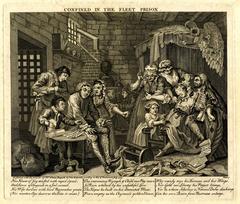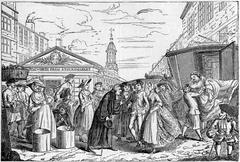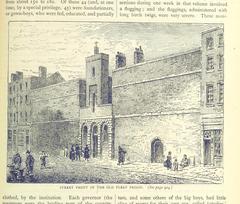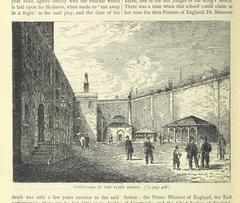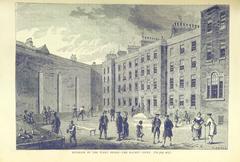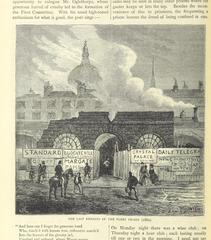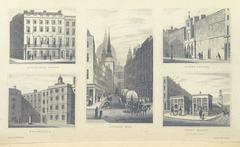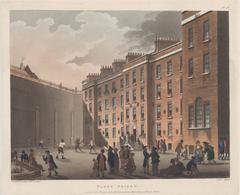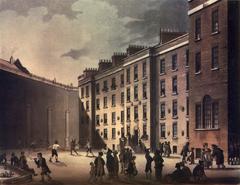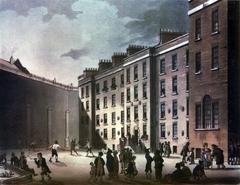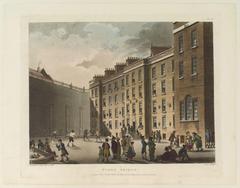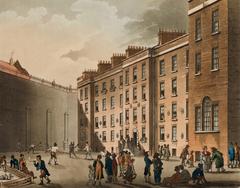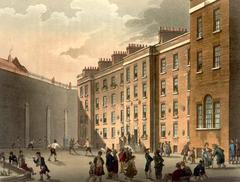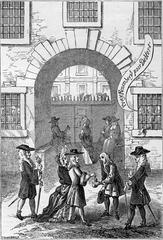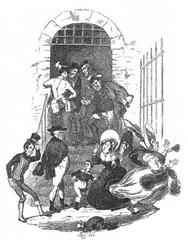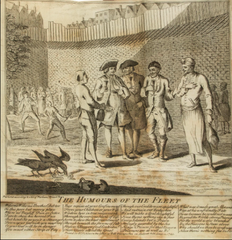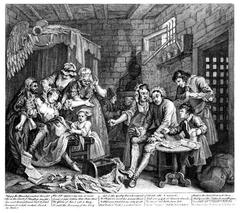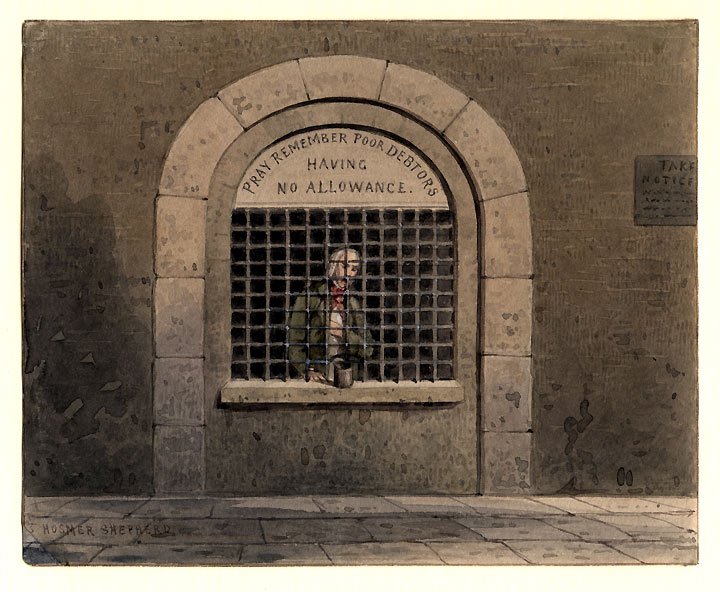
Fleet Prison Visiting Hours, Tickets, and Historical Significance Guide in London
Date: 14/06/2025
Introduction to Fleet Prison
Fleet Prison, once a notorious London institution, played a pivotal role in English justice and penal reform. Established in 1197 by the banks of the now-subterranean River Fleet, it operated for centuries as a detention center for debtors, political prisoners, and those in contempt of court. Although the prison was demolished in 1846, its story survives in local history, literature, and the modern streetscape near Farringdon Street and Ludgate Hill. Today, visitors can explore its legacy through commemorative plaques, nearby museums like the Museum of London and the Clink Prison Museum, and themed walking tours that reveal London’s penal past. Notably, Fleet Prison’s history includes infamous “Fleet Marriages,” periods of squalid overcrowding, and a roster of notable inmates such as poet John Donne. This guide offers a comprehensive look at Fleet Prison’s significance, details for visitors, and recommendations for making the most of your exploration in London. (Exploring Fleet Prison: History, Legacy, and Visiting London’s Historic Site, Exploring Fleet Prison: History, Legacy, and London’s Lost Landmark, Exploring Fleet Prison Today: Visiting Hours, Tickets, and Nearby London Historical Sites, Visiting Fleet Prison Site: History, Walking Tours, and London Historical Sites)
Contents
- Introduction
- Historical Overview of Fleet Prison
- Origins and Early Development
- Structure and Daily Life
- Notable Events & Inmates
- Conditions and Reform
- Visiting Fleet Prison Today
- Site Details and What to See
- Nearby Attractions
- Visiting Tips
- FAQs
- Exploring Fleet Prison: Legacy & Modern Site
- Historical Context
- Symbolism and Cultural Impact
- Urban Memory
- Visitor Information
- Tours and Events
- Walking Tours & Self-Guided Visits
- Practical Information
- Conclusion & Visitor Recommendations
- Sources
Historical Overview of Fleet Prison
Origins and Early Development
Founded in 1197, Fleet Prison was situated near what is now Farringdon Street. It initially detained debtors and those held in contempt by the royal courts, expanding over time to include political prisoners and religious dissenters. The proximity to Fleet Street, a bustling legal and commercial district, made it an ideal center for enforcing court orders and reflecting royal authority outside the City of London.
Structure and Daily Life
Fleet Prison featured a walled compound with multiple buildings and courtyards. The gatehouse led to five stories of dimly lit corridors, with accommodations ranging from relatively comfortable private rooms for affluent inmates to overcrowded, unsanitary communal quarters for others. Facilities included recreational spaces like a racket-ground and skittle alley, particularly popular in the 18th century.
Administration was profit-driven: inmates paid fees for food, lodging, and even basic necessities. Wealthier prisoners sometimes lived in the “Liberty of the Fleet,” an area allowing limited freedom in return for extra payments, while poorer inmates often relied on charity.
Notable Events & Inmates
Fleet Prison was repeatedly destroyed and rebuilt following major events such as the Peasants’ Revolt (1381), the Great Fire of London (1666), and the Gordon Riots (1780). It became infamous for “Fleet Marriages”—unregulated unions conducted by imprisoned or unscrupulous clergy—until reforms in the mid-18th century. Notable prisoners included poet John Donne and political figures like William Prynne and John Lilburne.
Conditions and Reform
The prison was notorious for overcrowding, poor sanitation, and corrupt management. The division between the “common side” and the “master’s side” highlighted class disparities, with the poor often begging for sustenance while the wealthy secured better conditions. Reformers like John Howard and writers such as Charles Dickens drew public attention to these abuses, eventually spurring changes in prison administration.
Visiting Fleet Prison Today
Site Details and What to See
Fleet Prison was demolished in 1846. Today, its site is marked by a commemorative plaque on Farringdon Street, near Ludgate Hill. No original prison buildings remain, but visitors can engage with its legacy through:
- Commemorative Plaques: Mark the prison’s historical location and significance.
- Nearby Museums: The Museum of London and the Clink Prison Museum offer broader context on London’s penal history.
- Walking Tours: Several themed walking tours include the former Fleet Prison site and surrounding legal landmarks.
Nearby Attractions
- Fleet Street: Known for its publishing heritage and historic pubs.
- St. Bride’s Church: Features a distinctive spire and connections to Fleet Street’s history.
- The Old Bailey: London’s central criminal court, near the former prison site.
- The River Fleet: The now-subterranean river can be traced via walking tours.
- Hoop and Grapes Pub: An 18th-century pub with ties to the local history.
- St. Paul’s Cathedral: Just a short walk away, offering insights into the city’s religious and civic life.
Visiting Tips
- Accessibility: The area is served by Blackfriars, Farringdon, and St. Paul’s Underground stations. Wide pavements and step-free access make it suitable for all visitors.
- Cost: Free; no admission or ticket necessary to view the commemorative site.
- Best Times: Daytime visits are recommended for safety and photography.
- Combine Visits: Pair your exploration with nearby historic sites for a fuller experience.
Frequently Asked Questions (FAQs)
Can I visit Fleet Prison today?
No, the prison was demolished in 1846. Visitors can, however, explore the marked site and learn about its history through plaques, nearby museums, and walking tours.
Are there any remnants or exhibits?
No original structures survive on site. A small section of prison wall is preserved in the courtyard of the old Daily Telegraph building on Fleet Street, and museums nearby reference Fleet Prison in their exhibits.
Do I need a ticket to visit?
No, the site is public and free to access. Walking tours or museum visits may require tickets.
Are there guided tours available?
While no tours focus solely on Fleet Prison, several City of London and Fleet Street walking tours include the site among other historic stops.
Which nearby historical sites should I visit?
Consider visiting St. Paul’s Cathedral, the Old Bailey, the Clink Prison Museum, and tracing the River Fleet’s lost route.
Exploring Fleet Prison: Legacy & Modern Site
Historical Context and Significance
Fleet Prison’s history reflects the evolution of English law, punishment, and social hierarchy. Originally a symbol of royal power, its role shifted from detaining political offenders to serving primarily as a debtors’ prison. The distinction between the “common” and “master’s” sides emphasized class divisions, and the notorious conditions within spurred public outcry and reform.
Symbolism and Cultural Impact
Fleet Prison became a literary symbol of injustice and social stratification, featuring in works by Charles Dickens and William Hogarth. The “Liberty of the Fleet” influenced marriage laws through clandestine unions conducted outside official church sanction.
Urban Memory
Although Fleet Prison no longer stands, its legacy endures in street names, commemorative plaques, and the preserved wall section on Fleet Street. The site near Five Fleet Place and Farringdon Street is easily accessible and marked for visitors.
Visitor Information
- Location: Five Fleet Place, Farringdon Street, London EC4M 7RD
- Accessibility: Wheelchair accessible; public transport nearby.
- Opening Hours: Public space, accessible at any time.
- Admission: Free
Tours and Events
Local history groups and commercial tour operators occasionally offer walks focusing on London’s legal and penal heritage, often including the Fleet Prison site. Check local listings and museum event calendars for current offerings.
Walking Tours & Self-Guided Visits
Self-Guided Walks:
Trace the hidden River Fleet from Hampstead Heath to Blackfriars Bridge, passing the Fleet Prison site. Use online maps and mobile apps for historical context. (Living London History)
Guided Walks:
Look for tours that explore Fleet Street, the City of London, or London’s lost rivers for in-depth stories about Fleet Prison and related landmarks.
Practical Visitor Information
- Public Transport: Blackfriars (District and Circle), Farringdon (Elizabeth, Circle, Hammersmith & City, Metropolitan), St. Paul’s (Central)
- Buses: Multiple routes service Farringdon Street and Ludgate Circus.
- Nearby Amenities: Restaurants, cafés, and public restrooms along Fleet Street and near Blackfriars Station.
- Safety: Standard urban precautions apply; area is busy and well-lit.
Conclusion & Visitor Recommendations
Fleet Prison’s physical absence is balanced by its enduring narrative in London’s history. The site offers a window into centuries of legal, social, and cultural transformation. For the best experience:
- Visit the commemorative plaque and nearby preserved prison wall.
- Combine your visit with attractions like St. Paul’s Cathedral, the Old Bailey, and the Museum of London.
- Use self-guided or themed walking tours to contextualize the area’s history.
- Access digital resources, maps, and audio guides such as those provided by the Audiala app for a richer exploration.
Whether you’re a history buff or a curious traveler, delving into Fleet Prison’s story enriches your understanding of London’s multifaceted past.
Sources and Further Reading
- Exploring Fleet Prison: History, Legacy, and Visiting London’s Historic Site
- Exploring Fleet Prison: History, Legacy, and London’s Lost Landmark
- Exploring Fleet Prison Today: Visiting Hours, Tickets, and Nearby London Historical Sites
- Visiting Fleet Prison Site: History, Walking Tours, and London Historical Sites
- The Fleet Registers, National Archives

